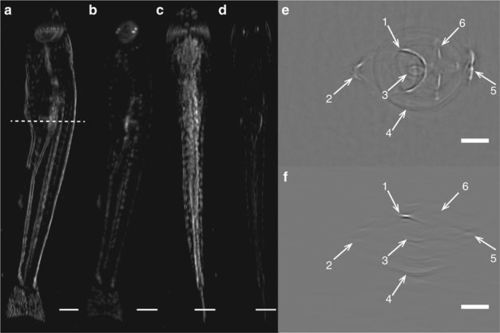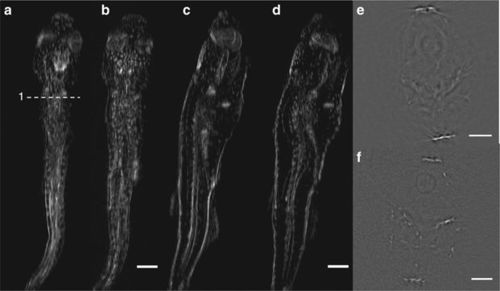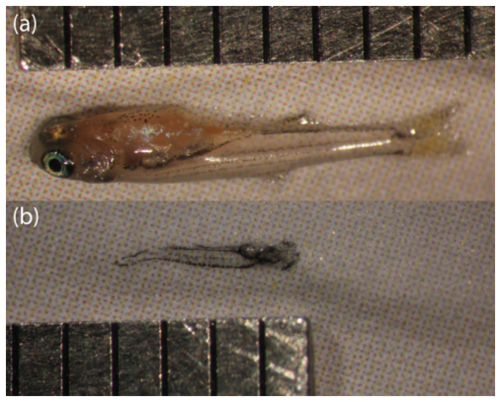- Title
-
Optical imaging of post-embryonic zebrafish using multi orientation raster scan optoacoustic mesoscopy
- Authors
- Omar, M., Rebling, J., Wicker, K., Schmitt-Manderbach, T., Schwarz, M., Gateau, J., López-Schier, H., Mappes, T., Ntziachristos, V.
- Source
- Full text @ Light Sci Appl
|
Comparison of the images generated using MORSOM and RSOM. (a) Top view MIP from MORSOM. (b) Top view MIP from RSOM. (c) Side view MIP from MORSOM. (d) Side view MIP from RSOM. (e) Cross section through the Zebrafish taken from MORSOM at the position indicated by the broken line in a. (f) Same cross section from RSOM. The arrows point to the similar features shown in e and f. In the MORSOM case, many features are either complete or do not even appear in f (Scale bars=a–d 500 μm; e,f 250 μm, 0.3% of the pixels in a–d were saturated to improve the visibility of the RSOM images). |
|
Comparison of MORSOM at 50 MHz and at 100 MHz. (a) Side view MIP from MORSOM at 50 MHz. (b) Side view MIP from the 100 MHz data. (c) Top view MIP from the 50 MHz data. (d) Top view MIP from the 100 MHz data. (e) Cross section through the Zebrafish at 50 MHz compared with (f) 100 MHz. (Scale bars=a–d 500 μm; e,f 250 μm). |
|
A comparison between a juvenile Zebrafish, and a larvae. Typical size for a 21-22 dpf Zebrafish, born 4/6/2016 and photo taken 4/28/2016 (a) Typical 6-7 dpf Zebrafish, born 4/21/2016 and photo taken 4/28/2016 (b). |



